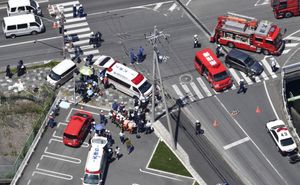AC Milan is making significant waves this January transfer window with key player movements and tactical shifts, aiming to solidify their position as contenders for the Italian Serie A title. Following some intriguing developments, the club is prepared to navigate these challenging changes successfully.
After their midweek victory against Roma, where Tammy Abraham scored two goals and new signing Santiago Gimenez facilitated play, the club is optimistic. Zlatan Ibrahimovic, the veteran star, spoke before their latest league match at Stadio Carlo Castellani, emphasizing the importance of consistency. “Today the result is very important, as in all matches. We have to win and move up the table; it’s fundamental,” Ibrahimovic stated during his pre-game interview with Sky.
With significant challenges lying ahead, Ibrahimovic did not shy away from discussing the club's recent acquisitions. Speaking about Santiago Gimenez’s impact, he remarked, “We believe in him a lot and that's why we've made a big investment in him. We have to make him grow and feel good. He’s strong in the box and he’s good at scoring goals. He also helps with assists, not just goals.” These comments reflect Milan's strategic investment philosophy, viewing player development as integral to their future success.
While the club's recent transfer strategy displays promise, it also revealed underlying tensions. Notably, Ismael Bennacer ended his five-year stay with AC Milan on Deadline Day, marking his departure to Marseille as controversial. The Algerian midfielder reportedly had a "heated face-to-face" confrontation with Coach Sergio Conceicao during halftime of the Derby della Madonnina. The disagreement arose after Conceicao replaced Bennacer with Alex Jimenez – a decision Bennacer vocally opposed.
Bennacer’s departure, coupled with the manner of his exit, highlighted existing frustrations within the squad. Although Alvaro Morata was the first player to leave earlier, indicating potential internal strife among players, Bennacer’s late transfer stirred up sentiments within the club. Reports indicated frustrations within the team were mounting, leading to his decision to leave right at the closing of the transfer window. This unforeseen shift caught the club off guard, resulting in some discontent over the timing of his move. Nevertheless, the signing of Warren Bondo as his replacement demonstrated the club's commitment to maintaining depth.
On the tactical front, Coach Sergio Conceicao is preparing for new dynamics with the addition of Joao Felix, who joins the roster after his stint at Chelsea. Conceicao's tactical approach, which often utilizes a 4-4-2 formation, will now heavily rely on his revamped squad. This strategy necessitates balancing offensive play with defensive stability, especially after his contrasting options of attacking players like Felix, Pulisic, Rafael Leao, and Gimenez.
There’s an exciting possibility of the aforementioned players operating simultaneously with Felix leading the charge. While this could yield remarkable offensive potential, it also raises concerns over tactical balance. Conceicao faces the challenge of ensuring adequate defensive coverage, as Leao and Pulisic are more focused on attacking, without guaranteed support on the backline.
Playing against tougher opponents could see Conceicao lean more on players like Yunus Musah and Alex Jimenez, known for their ability to cover flanks efficiently and provide tactical balance. These players are well-suited for supporting both defensive tasks and offensive endeavors when executing the team's game plan. Meanwhile, Soufiane Sottil also brings unique versatility across the attacking third, adding to Milan's adaptive strategies.
With the series of adjustments throughout the squad, the team experiences heightened versatility aimed toward achieving their primary objective: qualifying for the next Champions League competition. The winter transfer business has not only intensified the roster but renewed aspirations for success within the team.
Overall, AC Milan's recent strategic decisions reflect their ambition to remain competitive within Serie A. Despite some internal conflicts, the leadership and tactical shifts may shape Milan’s identity for the remainder of the season as they seek to solidify their place among Europe's elite clubs.



